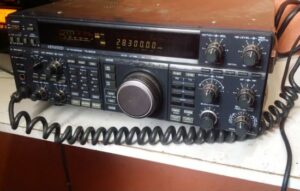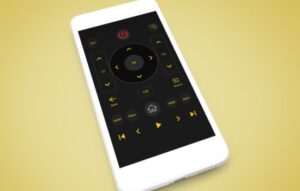Just a few years ago, taking piano lessons meant investing in an instrument, paying for hours of tuition, and traveling to a conservatory or academy.
Today, thanks to the digital revolution, learn to play the piano free and conveniently is a reality within your reach.
In this text, you'll discover a renewed approach, structured in five sections, that will guide you step by step: from choosing your study environment to tips for staying motivated.
In addition, we will analyze in detail the application Simply Piano, one of the most effective tools for beginners. Get ready to embark on a musical journey without leaving your home!
See also
- Master Your Smartphone's Battery Life
- Discover your Love Compatibility with the Love Calculator
- Reborn Memories: Recover Lost Photos on Your Cell Phone
- Control Your Health: Monitor Your Blood Sugar with Your Cell Phone
- Credit Card Companies with the Best Customer Service
1. The ideal environment for your learning
Creating a conducive space is the first step to making your experience learn to play the piano be both enjoyable and productive. Consider the following aspects:
1.1 Lighting and comfort
A well-lit area, with natural light whenever possible, makes it easier to read sheet music and prevents eye strain. Make sure you have an ergonomic chair that keeps your back straight and allows your feet to rest on the floor.
1.2 Sound insulation
Although not everyone has a professional studio, you can minimize ambient noise by using carpets, thick curtains, or basic acoustic panels. This improves your concentration and encourages critical listening to each note.
1.3 Organization of the material
Have a notebook, a pencil for taking notes, and, if you're using printed sheet music, a stable music stand. If you're using a digital or MIDI keyboard, make sure the cables are organized and that the connection to your device works without interruptions.
With the right environment, each practice session will be more efficient and enjoyable, paving the way for steady progress. learn to play the piano.
2. Comprehensive benefits of playing piano
Beyond aesthetic pleasure, piano practice offers benefits in three dimensions: cognitive, emotional, and social.
2.1 Cognitive development
- Memory improvement: By memorizing scales, chords, and entire pieces, your working and long-term memory is strengthened.
- Troubleshooting: Reading sheet music and performing simultaneously with both hands exercises the ability to process complex information and make quick decisions.
- Mathematical thinking: Understanding rhythms and beats reinforces number sense and the detection of logical patterns.
2.2 Emotional well-being
- Stress reduction: Touching releases endorphins and lowers levels of cortisol, the stress hormone.
- Personal expression: The piano acts as a channel for expressing emotions, from the melancholy of a nocturne to the joy of an allegro.
- Self-confidence: Every goal achieved—whether it's mastering a scale or completing a piece—boosts your self-esteem.
2.3 Social connection
- Collaboration: Sharing your progress with family or friends, or playing in a duet, fosters teamwork.
- Online communities: Forums, social media groups, and sharing platforms allow you to receive support, advice, and feedback from other fans.
These benefits make the effort invested in learn to play the piano bear fruit in all areas of your life.
3. Free resources for your training
There are multiple online resources that, when combined, cover theory, technique, and practice:
- Video Tutorials: Specialized YouTube channels offer free lessons on sheet music reading, hand technique, and music theory.
- Forums and blogs: Platforms like Reddit and music education blogs share downloadable exercises and professional advice.
- Notation software: Free tools like MuseScore allow you to write, listen to, and correct your own scores.
- Mobile applications: Here it stands out Simply Piano, which combines interactive lessons, note recognition, and progress tracking into a single interface.
By combining these elements, you build a complete study plan without the need for financial investment.
4. Get to know Simply Piano thoroughly
Simply Piano has become a favorite choice for those who want learn to play the piano self-taught. Its main characteristics are:
4.1 Level-guided method
The app divides learning into successive levels. You start with basic hand position and note reading exercises, and progress to chords, scales, and more complex pieces.
4.2 Real-time recognition
Thanks to your device's microphone or MIDI connection, Simply Piano Evaluate your performance note by note. If you hit a wrong key, you'll receive immediate feedback to correct your posture or timing.
4.3 Song Library
Over 100 pieces, ranging from Chopin classics to modern pop and rock songs. Learning songs you're passionate about increases motivation and consolidates what you've learned.
4.4 Personalized practice plans
The app adjusts the difficulty and length of the lessons based on your daily performance. If you repeatedly fail an exercise, Simply Piano will repeat that module until you master it.
4.5 Progress Tracking and Rewards
A system of achievements and digital certificates motivates you to meet weekly goals. You can view statistics on practice time, reading speed, and accuracy.
4.6 Free modules vs. Premium
While a paid subscription with additional content is available, the free version includes plenty of starter lessons to establish a solid foundation for the first 8–12 weeks of study.
With Simply PianoYou don't need any prior experience: the intuitive interface and constant support make you feel like you have a private tutor at home.
5. Strategies to move forward successfully
To get the most out of your homeschooling, follow these tips:
- Set a fixed schedule. Schedule short sessions (20–30 min) each day instead of long, sporadic sessions.
- Divide your goals. Instead of setting out to “learn an entire piece,” focus on mastering one specific measure or passage per session.
- Record your practices. Listening to yourself afterwards helps detect imperfections and assess your progress.
- The repertoire varies. Combine technical exercises, scale studies, and songs you enjoy to keep things interesting.
- Participate in communities. Share your achievements on social media or in forums; external feedback reinforces your commitment.
- Complement with theory. Spend time understanding the basics of harmony and rhythm; this will accelerate your ability to improvise and memorize.
By applying these strategies, your progress to learn to play the piano will be constant and satisfying.

Conclusion
Today you have at your disposal a complete ecosystem for learn to play the piano Free from your home. Create a dedicated space, take advantage of the cognitive and emotional benefits of piano, combine free online resources, and rely on an interactive tool like Simply Piano are the recipe for success. Daily discipline, well-defined goals, and connecting with other students will make your musical journey an enriching and lasting experience.
Don't miss the opportunity to transform your daily life with the magic of the piano. Download Simply Piano, adjust your practice routine, and start enjoying every chord and every melody. Your home is about to become your ultimate conservatory!









